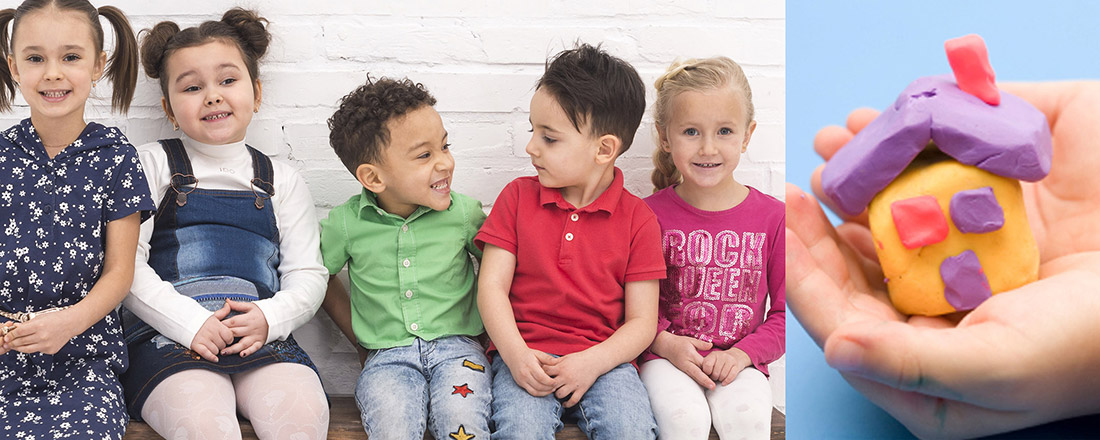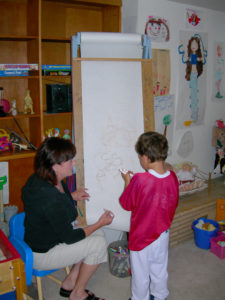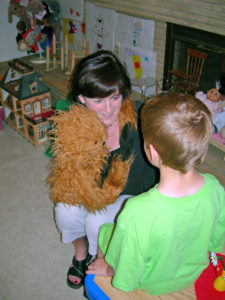

Play therapy provides a safe and enjoyable setting wherein girls and boys interact with toys, a nurturing therapist, and sometimes a parent or grandparent, to express feelings about unpleasant circumstances.
For example, most children whose parents are divorcing will spend a great deal of time in the sand table enacting a war between two sides; a girl who was recently adopted played out the story of a family with a new baby in the doll house.
In therapeutic play, boys and girls first create and then transform their world of discomfort, and even trauma, to a world of hope, happiness, inner peace, freedom, belonging, and growth. Whatever they imagine in their play is as real to them as those destructive happenings elsewhere over which they had no control. In this nurturing milieu they are able to tell and transform their stories. For instance, if Susie’s dog is missing, she plays out this sad story, and then finds comfort by adding some healing element such as a nice family finds and cares for the lost dog.
One of the most popular of the interactive toys is a large, brown, very fuzzy, and lovable arm puppet named Freddie. Freddie has one very entertaining, although sometimes irritating habit; he eats boys’ and girls’ shoes! When children hear about this, they usually smile and either hide their shoes or humorously offer them to him. Freddie is one of several playroom mascots that serve to put kids at ease. Many children have preferred to share their stories, or even their secrets, with these puppets before telling Dr. Painton or anyone else.

Play and imagination are a child’s way of remaining balanced and healthy, while moving out of a state of conflict, maturing, and developing more positive attitudes. Play therapy creates these beneficial results by providing a basic environment of freedom of expression, recognition, structure, and acceptance. Dr. Painton’s role as a play therapist is to help the child client to be as comfortable as possible, at once feeling safe and acknowledged. Following the invitation of the child, she gradually becomes a trusted helper, whose goal is to enhance the emotional well-being of boys and girls alike. She works together closely with parents sometimes inviting one or two members of the family into the playroom for a session with their child. When needed, she teaches parents how to be helpful between sessions. She also offers on-going therapeutic groups for children and teens.
The importance of a playroom and a therapist, who appreciates the value of play and is trained to engage with children in play therapy, must not be underestimated. You can locate a play therapist in any state by contacting The Association for Play Therapy (APT) at their website.
